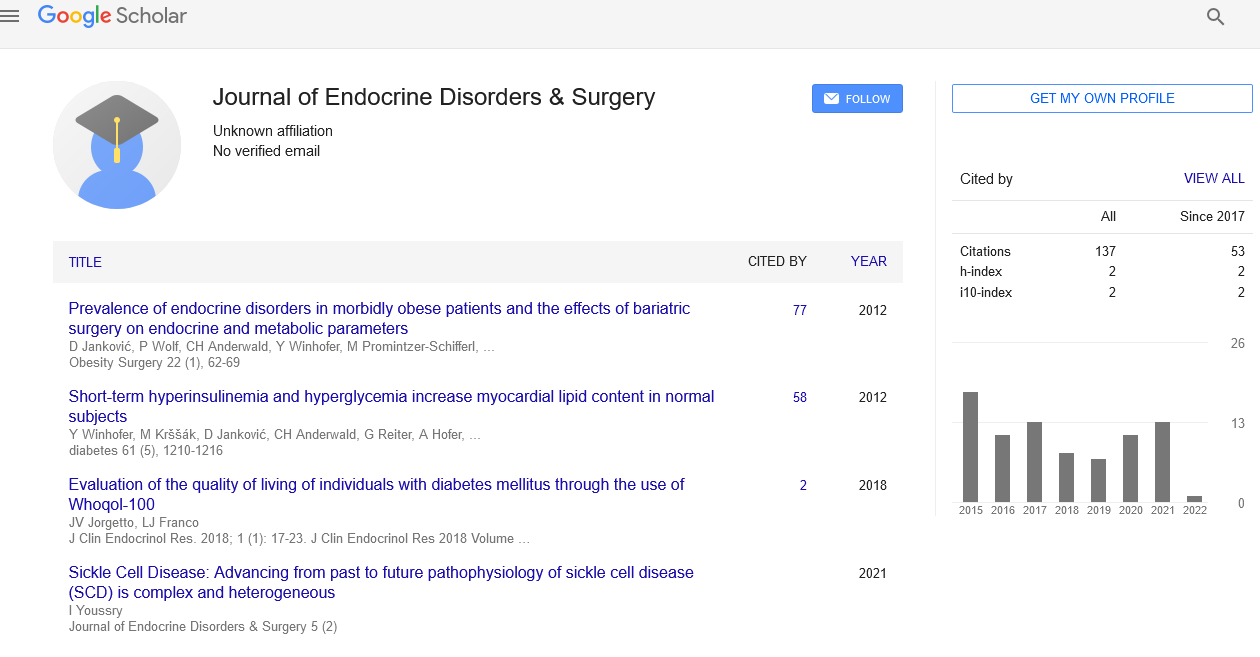All submissions of the EM system will be redirected to Online Manuscript Submission System. Authors are requested to submit articles directly to Online Manuscript Submission System of respective journal.

Sign up for email alert when new content gets added: Sign up
Abstract
Gastrointestinal hormones and the dialogue between gut and brain
Author(s): Bernard Khoo, Tricia Mei-Mei TanThe purpose of this study was to develop a qualitative and socioculturally tailored systems model of childhood obesity in the Chinese American community in Manhattan’s Chinatown. We utilized group model building (GMB) methodology as a form of participatory systems modeling. The study was conducted in Manhattan’s Chinatown community. We recruited 16 Chinese American adults from the community. GMB workshops engendered a causal loop diagram (CLD), the visualization of a complex systems model illustrating the structures, feedbacks, and interdependencies among socioculturally specific pathways underlying childhood obesity, in Manhattan’s Chinatown community. The analysis of CLD revealed that participants considered the following factors to influence childhood obesity: (1) traditional social norms affecting body image, how children are raised, parental pressure to study, and trust in health of traditional foods; (2) grandparents’ responsibility for children; (3) limited time availability of parents at home; and (4) a significant amount of children’s time spent indoors. GMB represents a novel method to understand the complexity of childhood obesity in culturally specific populations and contexts. The study identified sociocultural subsystems that may underlie the development and perpetuation of childhood obesity among Chinese American children. Insights from the study can be useful in the design of future empirical studies and interventions. Introduction In the last decade, increases in the prevalence of obesity have been documented among underrepresented ethnic groups such as African American, Hispanic American, and Asian American children. Between 2002 and 2012, Asian Americans on the whole experienced 102% increase in obesity (5.1% to 10.3%) as compared to 35% increase among whites. Although Asian American children have overall lower rates of overweight and obesity compared to other racial/ethnic groups in the US, they may be at higher risk for developing type 2 diabetes than other racial groups. Importantly, national data regarding obesity rates rarely differentiate Asian American children of different cultural backgrounds. In light of the widening disparity in childhood obesity trends, there is a need to reevaluate a “one-size-fits-all†approach to obesity and to consider the incorporation of sociocultural nuances in existing obesity prevention and treatment models. Culture influences obesity in myriad ways, including contributions to ideal child weight, child body image, child feeding practices, differences in levels and types of exposure to food marketing, preferences for and opportunities to engage in physical activity, and the utilization of health services, among other factors. In the context of Asian Americans, such models also need to take into account the varied experiences of migration and exposure to both the pre- and postimmigration environment. Among Chinese Americans specifically, researchers and practitioners need to consider this group’s unique immigration trajectories, prior experience with food insecurity that may contribute to parents’ and grandparents’ overfeeding practices, and the large amount of time that parents spend at work to support their families, which in turn affects children’s food intake and physical activity patterns. Understanding these sociocultural nuanced pathways to the development of obesity may be important to optimize the design and implementation of interventions. Group model building (GMB) offers a bottom-up, participatory strategy representing a method that engages diverse voices in communities to cobuild the complex systems maps of obesity causes, to code sign potential solutions, and to inform sociocultural nuanced theoretical models of childhood obesity. GMB is one type of participatory systems modeling method that seeks to engage stakeholders in the process of informing model construction. From its foundations, system dynamics has emphasized the importance of multiple sources of data for informing model structure, including quantitative data, qualitative and documentary records, and what Forrester describes as the “mental database†of experiences and observations of those working and living in systems. Approaches for engaging stakeholders in model construction range from key informant interviews and focus groups to multisession scripted participatory group model building workshops. The specific tradition that informs this study is Community-Based System Dynamics, in which participants themselves “hold the pen†and draw model structure from their own experience and the goals of group model building are both to inform model structure and to build capabilities within communities to understand the tools of system dynamics and systems thinking. In all of these traditions, the specific exercises and diagramming tools, including causal loop diagrams, stock and flow diagrams, and behavior-over-time graphs, are used as methods to elicit stakeholder perspectives to craft a hypothesis of system structure. Through a collaborative effort, a structured set of modeling exercises can be used to codevelop a causal loop diagram (CLD) to reveal interconnections between tangible and intangible variables. The CLD articulates key (locally specific) structures and feedback loops in the obesity system and often leads to new hypotheses, which are useful for further empirical research. GMB has demonstrated its usefulness in exploring sociocultural factors that affect health, including healthy eating, active living, and childhood obesity. In addition to other GMB strategies implemented and described below, CLD was adopted as a method that is aptly applicable for exploring complex problems such as obesity and for uncovering visual and dynamic interconnections between factors contributing to childhood obesity. CLD is a standard technique in systems dynamics modeling, upon which GMB is based. This methodology has a practical application enabling public health researchers, practitioners, and community stakeholders to collectively visualize the connections between multiple dynamic variables and to design health promotion solutions that addresses obesity from the community perspective. This approach is useful for developing successful community-level interventions. In this study, we sought to develop a socioculturally nuanced model of childhood obesity in the Chinese American community in Manhattan’s Chinatown in New York City (NYC). The purpose of this paper is to describe the GMB method used and to present the main findings based on the insights gained from the CLD.




